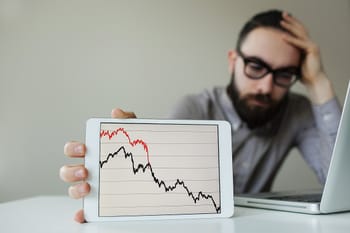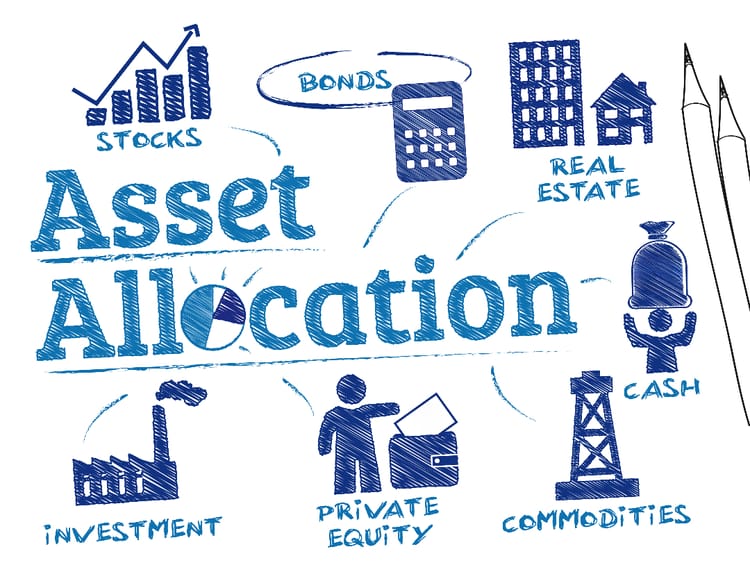Here is a reality check – all investments have risk. There is no way to get around risks of investment. Nothing is safe from risk in investing – stocks, bonds, or alternative assets. Even the risk-free assets are not free from their own kind of risk i.e. inflation risk. They will not generate enough returns to keep up with the rising costs. Hedging is the key to prevent and minimise the risks. You may not be able to completely protect your investment from risks but you can prevent losses by hedging risk.
In this article, we discuss what investment risks means, the variation of investment risks and how to manage them through hedging:
- What is investment risk?
- Types of investment risks
- How to manage investment risk
- What Is hedging?
- Hedging investment risks.
What is investment risk?
Investment risk is the uncertainty of losing the value of your money due to market conditions. It can stem from any factors – business, economy, borrowers and etc. The risk of losing is the fear every investor has and hence, they take certain measures to hedge against them. As such, there are some things you need to understand before putting your money in any investments, such as:
- The correlation between risk and reward – that is, the level of risk attached to the asset class or the investment with the returns on investment. This will clarify whether you should invest in that asset or whether the risks are worth the reward. For example, stocks carry a significant amount of risk but the returns are worth that risk. Hence, stocks are such a popular asset class
- The volatility of the investment in average – check the historical volatility of the particular investment or the asset class to give you an idea of its fluctuation degree. You should determine whether you will able to tolerate the investment volatility without losing everything in the process
- Understand and develop a risk management strategy to help you manage the risks that are appropriate for your portfolio. Not all strategies will ensure your investment returns. You must learn the investment strategies to identify, analyse and manage the risk. Understand individual strategies will help you hedge against market risks and allow you to modify them when necessary
Types of investment risks
Not all risks are the same and not all carry the same level of volatility. Different types of risks have their own hedging methods and it also depends on the types of investments, types of risk, market conditions, asset class, the level of volatility it carries, correlation factors, long-term/short-term, and many more. Below, we look at some of the basic types of investment risks.
Business risk
Business risk is related to the health of the company and whether it can bring in profits. It will look at whether sales are enough to generate an income that can cover operational expenses and still leave a profit. Operational expenses can be salaries of employees, rent, cost of production, office, and administrative expenses. The risk also depends on the demand for their services, so that they are not losing money trying to keep their company afloat.
Business risks can result from either internal or external factors. Internal risks refer to situations arising within the company (e.g., employee dissatisfaction causing unproductivity within production). External risks refer to outside factors that influence the business (e.g. political or environmental events causing losses to the company). In order to mitigate the risks efficiently, every business must understand the nature of the risks posed to their company before they can take any action.
Fortunately, Directive 2006/48/EC (CRD)[1] says that institutions must be able to manage and mitigate operational risk through a clear organisational structure with well-defined lines of responsibility and strong internal control mechanisms. In order for these arrangements, processes, and mechanisms to be effective, they must be detailed enough to cover all of the credit institution's activities.
Credit risk
Credit risk is also known as a default risk, where you have to assume that the borrower will fail to pay his loan and you will lose the interest and/or principal money you have invested. Certain credit risks have a low risk of default, like that of government bonds, but also have the lowest returns. Other credit lending is riskier but still generates a good return on interest. Fortunately, there are a number of ways in which you can mitigate your credit risk.
Basel Committee Guidance[2] was published to ensure that good credit risk management practises are used when the accounting for expected credit losses is put into place and used on a regular basis. The guidelines also emphasise that managers should approve and regularly review a credit institution's risk management strategy to avoid credit losses.
Market risk
Market risk can be defined as the risk of losses arising from unfavourable movements in market prices. There are three major types of market risk:
- Interest rate risk: Interest rate risk happens when the value of an investment changes because of the changes in the interest rates. This rate risk interest affects bonds more than stocks because the increase in interest rates worsens the value of the bonds. The interest rate risk also affects the secondary market where the bond prices increase and interest rates decrease. Interest rate risk can be prevented by fixed-income investments, which will be discussed in detail
- Equity risk: Equity risk mostly applies to the stock market, as in, the fluctuation of stock price happens due to its demand and supply, and the risk is that there may be a drop in the value of the stocks
- Foreign currency risk: You should only be worried about currency risk when you own foreign currencies as an investment or you hold assets in another currency. For example, you are holding US Dollars while living in the EU. The risk is that the value of those dollars may drop and will be worth less in Euros
Foreign investment risk
Foreign investment risks refer to the risk of loss when you are investing in foreign countries, for example, owning shares in a foreign company or holding funds in another state. It is interconnected with the country risks, which include economic risk, sovereignty risk, and political risk. Having investments in a foreign country also has currency risks.
Before deciding to invest in another country, one has to first measure the country's risk by observing the credit ratings from agencies like Moody's[3], Standard & Poor's[4]. A country should have a higher credit rating in order to be considered safe for investment. An investor should also examine the chosen country's economic and financial environment through its gross domestic product, inflation rate, and consumer price index.
Liquidity risk
Liquidity risk refers to whether your investment allows you to take out cash whenever necessary. Of course, most of the investments have liquidity risk because they are held in the investment for the long term. Hence, many hold extra liquid funds on the side to prevent this.
Of course, companies in the EU have been hurt by COVID-19 and the lockdown that came with it. Even though there has been a lot of policy help, the cash buffers of businesses have been quickly depleted, even though the EU government has provided financial aid to these companies. Studies[5] have shown that a lot of businesses had liquidity issues in 2020, and despite the financial help, 51% to 58% of businesses still suffered from liquidity problems after three months of lockdown.
Inflation Risk
You should be wary of inflation risk, especially if you have savings in a regular savings account. Inflation is the decline in purchasing power that will increase the cost of others and, thereby, living. This means that food that you were buying for 2 euros, is now 4 euros thanks to inflation. Not only savings are affected by inflation, some investments are too, such as bonds. Hence, many proponents insist people have investments on the side to offset the inflation of their savings.
Eurozone inflation is expected to be very high for the rest of 2022, and the European Central Bank is likely to raise its deposit rate by a lot next year. In March, inflation hit a new record high of 7.5%, which led to speculation that higher prices might become a permanent part of the economy. Ending their asset purchases and raising interest rates for the first time in a long time are likely to happen this year. Three of the biggest economies in the EU saw a big change in their annual inflation forecasts for this year, namely Germany, France, and Italy.
Concentration risk
An investment portfolio or a financial institution could lose money in value if one or more of its exposures move in the wrong direction at the same time. Concentration risk implies that it will cause such a big loss that it will be very hard to get back on your feet. The portfolio will be sold off or the institution will be forced to file for bankruptcy. Many different types of risks, such as:
- Market liquidity risk: It can be hard to sell, buy, or switch investment assets quickly if you have a lot of money. Most of the time, concentration risk is calculated by comparing the liquidity of an asset to its risk exposure
- Credit risk: If a single debtor or a group of debtors in the same industry goes bankrupt, it can be very bad for your business if you don't have enough diversification
Horizon risk
Horizon risk refers to the possibility that your investment horizon will be cut short and you may have to sell your investments to recover or to prevent further losses. For a short term horizon, the risk is very clear, as you know the volatility of the market and the little growth that comes along with it. So, losses are part of the risk. Risks for the long term horizon aren't so simple. When the market goes down, your investment can lose a lot of money, but it can also go up. As an investor, you have to think about both the up and down trends when you invest in more risky assets.
Longevity risk
The fact that we don't know how long we will live complicates any decision about saving for retirement. In particular, there is a risk that people will run out of money and have to cut back on their living standards when they get older, or even end up in a poverty trap. Longevity risk, which happens when people's expectations about how long they should live aren't met, has two parts:
- It's possible for a person to die before or after the average lifespan of his or her peers. This is called "individual longevity risk." Risks can be pooled in private annuity markets where people who live longer than average may get money from people who die younger
- Collective longevity risk is the risk that people will underestimate how long they will live. In contrast to individual longevity risk, this one can't be shared among people in the same group by writing a lot of life policies
At the moment, in the euro area, the risk of running out of money isn't very high[6] because most pension income comes from public sources and/or occupational defined benefit schemes.
How to manage investment risk
Managing investment risks requires knowing your risk appetite. You must be willing to accept that you will lose some or all of your money to market fluctuations. Depending on your investment goal, time horizon, and risk tolerance, the three simple investment risk management strategies:
- Portfolio diversification means spreading your capital across a lot of different types of assets so that they are not correlated. The assets you have chosen should not react the same way at the same time. You might lose some money, but the overall risk of losing money is lower, and you will be better able to deal with ups and downs in the stock market
- Asset allocation means how you divide your money among the assets you have chosen. Asset allocation depends on your investment goal, whether you want to have a stable, consistent income or you just want to grow it and rebalance it with major market changes
- Dollar cost averaging, which implements a more disciplined way to predict the market. Instead of buying low and selling high, which is difficult and costly anyway, you invest the same amount of money every month, disregarding the portfolio or the market trend, because you will be automatically buying more at a low price when the market is down
What Is hedging?
Hedging is a way to reduce your exposure to investment risk. An investor can reduce the risk of one investment by taking a position in another investment. The values of the two investments that are opposite each other should be the same.
Understanding risk hedging
Suppose an investor buys a stock and the value of that stock goes up. However, the investor doesn't know if the value of the stock will go up or down. The investor can hedge risks in his portfolio by investing in a financial instrument that will make money if the value of the stock he has drops, for example, bonds. Investors are less likely to lose money when they hedge their investments.
Investors can use a wide range of techniques and financial instruments to protect their investments, such as options contracts, futures contracts, short selling, investing in currencies, commodities, and other assets or derivatives, as well as other types of investments.
Disadvantages of hedging
While hedging is good for your investments, it can also be bad for you. The cost of hedging eats away at the profit, thereby reducing your returns. And since risk and reward are usually linked, cutting back on risk will cut back on profits as well. Hedging is hard for most short-term traders, like a day trader.
Hedging your investment would be a waste of time and money if the market is doing well or moving in the opposite direction. If you want to trade options or futures, you may have to have more money in your account. Hedging is a good way to trade, but it takes a lot of skill and experience to be good at it, which most people underestimate.
Hedging investment risks
You can not completely remove investment risk. However, hedging can save a lot of time because a long-term trader doesn't have to keep an eye on his portfolio as the market changes every day. You can manage and prevent some of the investment risks through asset allocation and diversification as discussed previously.
What hedging investment risks means
Hedging depends on the type of investment. Successful hedging protects the trader from changes in commodity prices, currency exchange rates, interest rates, inflation, and other things that could happen to the value of the trade. All asset classes have their own volatility and risks, and therefore, there are specific hedging methods to prevent losing money and generate higher returns. For instance, futures and options are great short-term and risk-reducing strategies for long-term traders.
How to hedge liquidity risk
The goal of your investment is to keep a high-quality liquidity portfolio that can effectively hedge outflows of money in times of stress. That is, to have enough counterbalancing power.
Even though having more cash is the easiest way to build a liquidity portfolio, it is not enough to grow your investment on par with all the risks. High-liquidity assets, like cash, are the most expensive to keep, despite having a lower execution cost when you need them quickly.
One optimal way to hedge against liquidity risk is to buy more assets that can produce future cashflows to help balance out the possible net cash outflows. This is known as "hedging with contractual cashflows"[7]. You can also use credit facilities and asset sales to generate liquidity when your net contractual cashflow can't keep up with itself.
Hedging business risk
Similar to inflation risk, companies should not rely on a single stream of income or asset but diversify it among several investments. However, it does not mean that a company should not have emergency capital because it will hedge against any risk should they need the cash and to keep the business operating should the sales not generate enough profits.
Internal business risks and the likelihood of their occurrence can be foreseen and calculated. As a result, the entrepreneur has a significant amount of control over how to mitigate them. To mitigate internal business risks, companies must ensure that their employees are satisfied, that their servers are kept up-to-date, and that their daily operations are prepared for any physical or financial damage.
As for external business risks, they cannot be foreseen and the probability of their occurrence cannot be established with certainty because they are usually beyond the control of the business. However, depending on the crisis itself, companies can respond to certain kinds of risks. Such as, companies can mitigate the economic crisis by either decreasing expenses or broadening their client base. For physical or natural disasters, companies can obtain insurance to offset some of the financial losses.
Hedging market risk
Depending on the asset being hedged, there are a variety of effective hedging strategies for reducing market risk (which also covers hedging interest rate risk, equity risk, and foreign currency risk, as previously stated). Portfolio structure, options, and volatility indicators are three typical types.
One of the most important tools is modern portfolio theory[8], which employs diversification to construct asset groups that reduce volatility. Options are yet another effective instrument that is frequently purchased by investors wanting to hedge an individual stock with decent liquidity against the chance of a downward trend in the market. Index options can be used by investors who want to hedge a broader, more diverse portfolio of companies. Index options are based on bigger stock market indexes such as the S&P 500[9] and the Nasdaq[10]. Investors can also use the volatility index[11] to hedge their bets. The Volatility Index gauges the implied volatility of the S&P 500 index's at-the-money calls and options.
Hedging concentration risk
Concentration risk limits, in general, are used to manage concentration risk. There are numerous methods for calculating concentration danger. Concentration indices[12] can be used to assess the level of concentration in a portfolio. You can also evaluate market impact using transaction cost analysis[13], which compares the expenses of trading financial instruments to acceptable benchmarks. It enables financial professionals to quantify brokers' trade execution performance, refine trading algorithms, and improve their investment decision-making process.
Also, implement stress testing[14] for extreme events for your organisation and analyse the financial effects of bad economic scenarios to ensure that you have enough capital to keep operations running during such times.
Hedging credit risk
Credit risks can be hedged through a number of steps. However, some of them may seem a little harsh. Depending on the severity of the risk, you can implement the following options to hedge against credit defaults:
- By charging your borrowers a higher interest who are more likely to fail
- By purchasing credit insurance to transfer risk to the insurer
- Through collateral from the borrowers, which can be held until the payment is made or seized if the borrower defaults
- Diversifying between borrowers, lending to multiple borrowers in small amounts to dilute risk
Hedging inflation risk
For inflation risk, most investors suggest not putting all the money in a savings account but diversifying it among several investments, such as mutual funds, the stock market, real estate, and others for a period of time. However, it does not mean you should keep nothing in a savings account because it will hedge against liquidity risk should you need the cash.
As such, you can beat inflation in the following four ways:
- By choosing your time horizon first
- Then allocate your assets as per the time horizon
- Diversifying your portfolio optimally and
- Not ignoring other investment vehicles, like alternative investments
Inflation is inescapable, and while it is important, it is not the ultimate goal. Other aspects, including risks, returns, and liquidity, should be considered as well.
Hedging horizon risk
Hedging against horizon risks is different depending on whether the investment is short-term or long-term. To protect against both short-term and long-term horizon risks, incorporate some short-term assets in your portfolio, such as an emergency fund in a high-interest savings account, to counter long-term horizon risks. If you are forced to sell your home, your emergency reserves will help you minimise your losses.
In general, as you approach the conclusion of your investing time horizon, you should reduce your allocation to longer-term investments. This can help you avoid having to sell most or all of your investments during a market downturn.
Hedging longevity risk
Hedging longevity risk is not an easy task as it heavily relies on a mass financial system provided by the state, companies, and private individuals. Therefore, to hedge longevity risks, there must be a collective action from the state and corporations.
While the government is looking for ways to reduce longevity risks[15], you may take some steps yourself to reduce the risks. You may invest in annuities or your pension system, which will pay out a fixed sum or a lump sum in the future after you retire. Simultaneously, you can readjust your portfolio allocation as you near retirement to reduce risks and still manage to grow your investment enough so that you will not need to worry about outliving your net worth.
Hedging foreign investment risk
Although foreign investment has other risks, like political, economic, and sovereign, the only kind of risk you have sufficient control over is the hedging currency risk.
Hedging foreign exchange risk with currency futures[16] can help you limit the risk of loss from currency swings. You can lock in the present exchange rate by taking an offsetting currency futures position.
Speculators in the currency markets trade foreign exchange futures contracts in order to profit from fluctuations in exchange prices. You can place long or short bets on it. This hedging method has two possible outcomes. If you are correct and the euro appreciates versus the dollar, the contract's value will climb as well, and you will profit. However, if the euro falls against the dollar, the contract's value falls as well.
Currency hedging can also be done in another method. Rather than locking in a currency price for a future date, you can buy the currency right away.
Summary
Investment risks are uncertain and you may lose your money at anytime to the many variations of it. Although there are no exhaustive lists of investment risks, we have discussed some of the major ones, such as business, credit, market, liquidity, inflation, longevity, horizon, concentration, and foreign investment risks. Fortunately, you can hedge against most of them through basic investment strategies, such as portfolio diversification and asset allocation. Most hedging strategies coincide with one another, so for example, if you are trying to hedge against inflation risk, you will also be hedging against business risks.
Risk is unavoidable. However, it does not have to be a daunting experience to prevent it. Hedging against investment risks can be challenging and yet a valuable learning experience for investors. Whether or not you will need all the hedging strategies, understanding their characteristics will give you an upper hand in your investment portfolio.
Frequently Asked Questions
What are the main types of investment risks?
The most common risks include business risk, credit risk, market risk, liquidity risk, inflation risk, concentration risk, horizon risk, longevity risk, and foreign investment risk. Each has a different impact on portfolio stability and requires specific mitigation strategies.
How can investors hedge against market risk?
Market risk can be hedged with diversification, options, index funds, futures contracts, and by structuring portfolios in line with modern portfolio theory. These methods reduce exposure to volatility and help balance long-term returns.
Is it possible to fully eliminate investment risk through hedging?
No, hedging cannot completely remove investment risks. It only helps reduce potential losses and manage exposure. While risks like inflation or currency fluctuations can be partially controlled, investors should still be prepared for some level of uncertainty.
List of References
- Source: eba.europa.eu
- Source: eba.europa.eu
- Source: investopedia.com
- Source: investopedia.com
- Source: cepr.org
- Source: ecb.europa.eu
- Source: openriskmanual.org
- Source: investopedia.com
- Source: investopedia.com
- Source: investopedia.com
- Source: investopedia.com
- Source: ncbi.nlm.nih.gov
- Source: kantox.com
- Source: investopedia.com
- Source: investopedia.com
- Source: ecb.europa.eu






